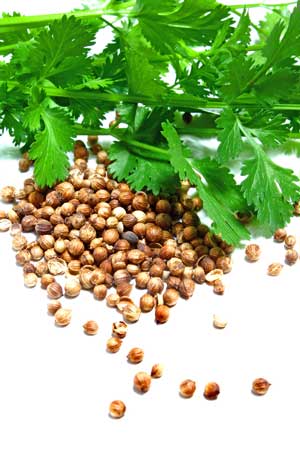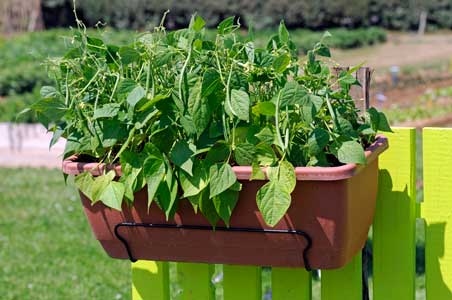Just like any well-run organization, a good food garden needs a succession plan. Gardeners already use this process when they remove lettuces and other cool-season crops that have gone to seed (called bolting) and replace them with hot-weather plants, such as peppers. The practice of succession planting is practical for several edible plants, which, like lettuce, go to seed quickly. It also works well with plants that are strong producers, such as beans, which you don’t want to harvest all at once. Here are a few common, easy-to-grow plants that work well when planted in succession to ensure a fresh, season-long harvest.
 Cilantro goes to seed in warm weather, so sow seeds every seven days to keep a fresh crop going.
Cilantro goes to seed in warm weather, so sow seeds every seven days to keep a fresh crop going.
© Tartaro/CanStockPhoto
Herbs:
Cilantro – this herb staple of Mexican, Thai and other dishes, can go to seed very quickly, especially in warm weather. Cilantro is fairly cold tolerant, so buy a plant to get things started in spring, then sow seeds outdoors in a pot or the ground every seven days. The seed of cilantro is called coriander and can be dried and used as a spice or sown for fresh crops.
Dill – like cilantro, this tasty herb can bolt in hot weather. It’s also a food source for swallowtail caterpillars, so plant lots, some for you and some for the critters. Buy a plant in late spring, then sow seeds outdoors every 14 days through early summer and again in early fall.
Basil – pesto lovers rarely have enough of this aromatic, leafy herb. Easily damaged by cool temperatures, don’t plant basil outdoors until all danger of frost has passed. Start with plants early in the season, then sown seeds every couple of weeks in pots or in the ground. With the threat of basil downy mildew, sowing seeds may be the only way to ensure a summer-long harvest.
 'Mascotte' green bean is perfect for window boxes, pots and other containers. Sow seeds every two weeks for a long season of beans.
'Mascotte' green bean is perfect for window boxes, pots and other containers. Sow seeds every two weeks for a long season of beans.
Photo courtesy All-America Selections
Vegetables:
Beans – whether climbers or bush types, sow seeds every two weeks until early July.
Sweet corn – sow seeds every two weeks until late June or early July.
A lot of gardeners who also can their food may be more interested in crops that produce all at once to concentrate food preservation tasks over a few weeks, rather than throughout the season. To make sure plants get the appropriate nutrients through the growing season, apply a veggie plant food according to label directions.
By Jo Ellen Meyers Sharp